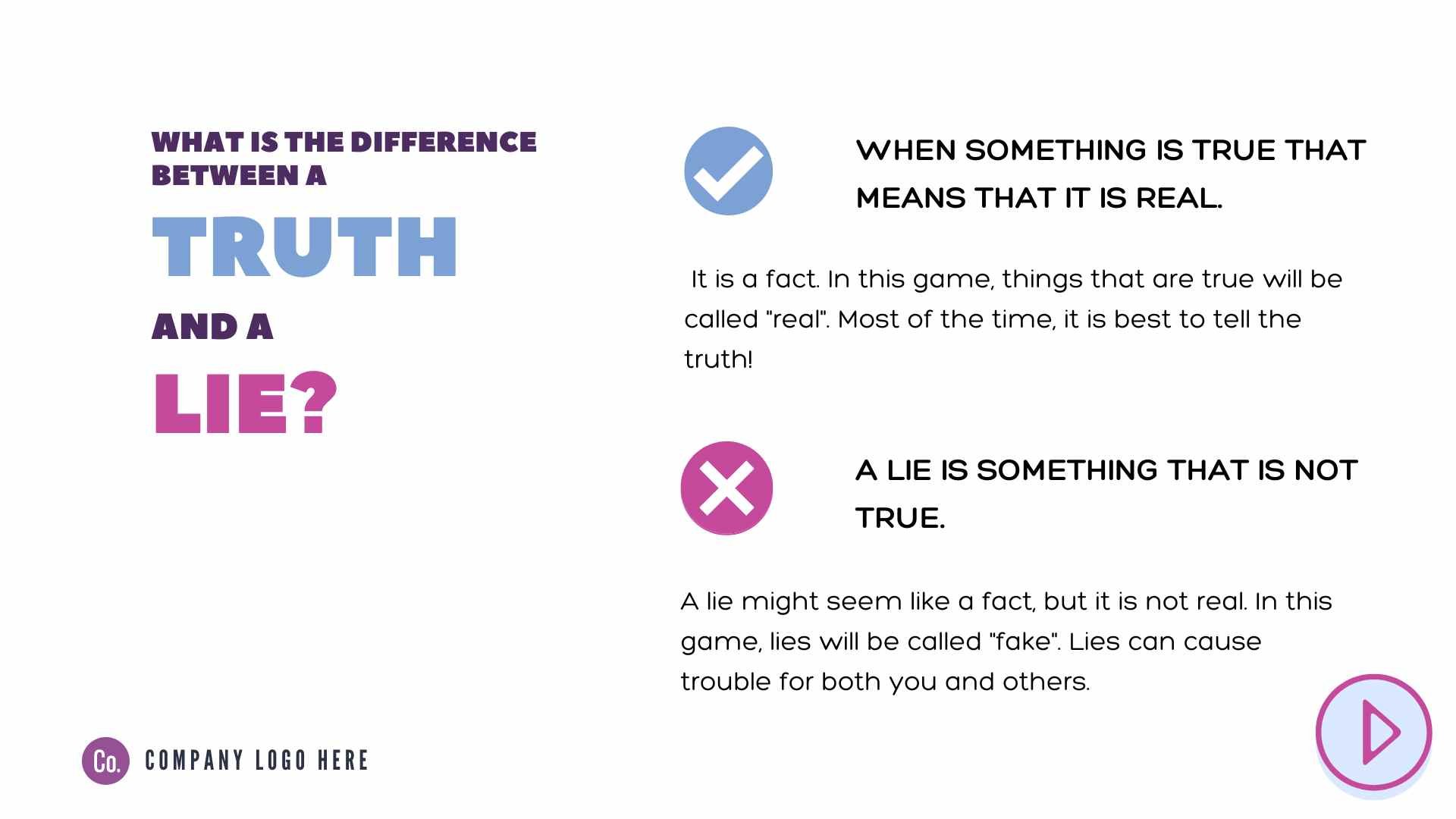Real or Fake: An Interactive Game for Kids
Project Overview
The science museum I worked for launched an all-ages campaign about combating misinformation. An admirable, if complex, topic to tackle. As part of the early childhood team, I was responsible for coming up with a way to include our youngest learners. But how do you talk to toddlers and preschoolers about misinformation?
After a lot of brainstorming and research, I created this simple click-through game. It introduced young children to essential concepts and critical thinking skills. To fight misinformation as adults, kids first need to understand what misinformation is. To define misinformation, you need to grasp concepts like deceit and fakery. And to decipher these complicated ideas, you need to understand the difference between a truth and a lie.
Context & Facilitation
Museum staff played Real or Fake on a child-friendly tablet with families at the museum. It was a non-scheduled activity facilitated in the exhibit space. Because the museum floor was often busy, I decided to keep the game short and targeted.
Facilitators decided how much support to give families as they played through the game. They could read questions out loud and walk them through the entire play-through. Or families could take full rein and play independently.
To make it as friendly to use as possible, I kept the game uncomplicated and the language simple. I wanted guests to experience success while playing. Every word, color, and image was lovingly selected.
Learning Objectives
-
It’s easy to get fooled by a picture! To fight misinformation, people need to be able to recognize dupes when they see them.
In Real or Fake children practice looking at pictures with a critical eye. With support, they can grow into adults that know how to sort out the fakery.
-
The ideas of “truth”, “lies”, “real”, “fake” may seem straightforward to adults. For kids, the picture isn’t so clear. Children don’t fully understand the difference between a truth and a lie until they are about 4 years old. As many parent know, they may dabble with the concept as early as 2. But they won’t get truly proficient at lying until about 10 years old.
The game won’t override normal development. But it will allow a more explicit way to play with the nuanced idea of “real or Fake”.
-
Kids are naturally gifted question-askers, but they often take answers at face value. It’s important to make sure the new info we hear actually makes sense in the context of what we already know.
By questioning if a statement is true or not, kids build their healthy skepticism muscles. The ability to scrutinize information before we accept it as true has become essential.




